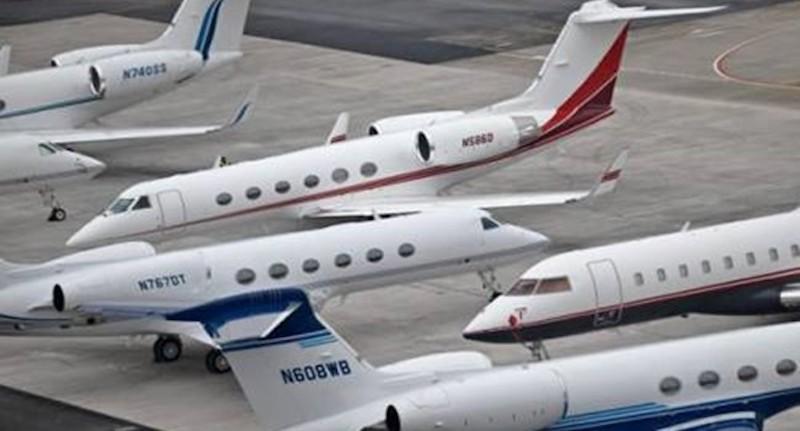Chinedu Eze
Aerospace giant, Airbus, the world’s biggest manufacturer of commercial aircraft, recently presented its market forecast for Nigeria in Abuja, during a media briefing at the 7th Aviation Africa Summit and Exhibition and projected the number of aircraft that would be acquired to operate in Nigeria in consonance to the growth of the air transport sector in the country.
Africa is projected to be the second fasted growing economy after Asia and Nigeria is at the centre of the projected growth, despite the current economic hiccups. The forecast reinforced the hitherto predicted growing demand for aircraft in Nigeria and Africa, driven by rapid urbanization, economic expansion and the important role of aviation as catalyst to economic growth.
Abuja and Lagos are reported to be the world’s fastest-growing cities in Africa, which expectedly will demand substantial surge in aviation demand over the next two decades. According to the 2023 Airbus Global Market Forecast (GMF), airlines serving Nigeria will require approximately 160 passenger and freight aircraft by 2042. This includes 131 single-aisle aircraft like the A220 and A320 families, along with 28 widebody aircraft such as the A330 and A350 families, all aimed at serving the growing Nigerian market.
Airbus recognises the profound significance of aviation in driving economic development across Africa. As Africa’s most populous nation, Nigeria boasts a vibrant and expanding economy, making the aviation industry a key player in connecting the nation’s diverse regions and fueling economic progress
The Airbus GMF also predicted that the growth of the aviation sector in Africa will result in an annual increase in services demand by 4.1%, soaring from $2 billion to $7 billion. A pivotal element in this growth is the expansion of Maintenance Repair and Overhaul (MRO) services at local and regional levels. By enhancing MRO capabilities, Nigeria can generate additional revenues, reduce aircraft maintenance costs, and create numerous job opportunities, further contributing to skills development in the nation and across the continent.
For the prediction to be actualized, the federal government has already initiated its five-point agenda, which leans on growth, protection of domestic airlines, infrastructure renewal at the airports, revenue generation that will drive economic growth and collaboration with relevant agencies, aircraft manufacturers and others. It is expected that government will support domestic airlines through policies that will enable them acquire more aircraft, get designated to international routes and protect them through Bilateral Air Service Agreement (BASA).
Airbus Aircraft A220
The A220 Family, comprising the A220-100 and the A220-300, is the most efficient small single-aisle aircraft. The A220 is a clean sheet design and the only aircraft purpose-built for the 100 to 150 seat market segment -offering up to 1,100nm more range.
Bringing together state-of-the-art aerodynamics, advanced materials and latest-generation technologies and engines, the A220 is perfectly sized for this market and with a range of up to 3,450nm (6,390km).
The A220 offers superior single-aisle comfort: widest seats, largest windows and 20 percent more overhead stowage space per passenger – providing flexibility for operators to right-size their operations.
The A220 Family is the ideal complement to the A320 Family and the latest addition to Airbus leading Single-Aisle Family.
The A330 Category
The A330neo, which leverages the new generation technology of the A350, offers profitable and enhanced passenger experience in the quietest cabin in its category. With 1,809 orders (including 323 A330neo variants) and 1,577 deliveries (including 107 A330neo), the A330 Family has the largest widebody operator base and a backlog of 232 A330 (17 A330 and 215 A330neo) aircraft.
The aircraft has a highly reliable and versatile reputation, serving all mission types in all markets for civil, freight, military, and corporate use.
The A330 has several variants, including the A330-200, which has a range of up to 7,250 nautical miles and seating for 210 to 250 passengers, and the A330-300, with a range of up to 6,350 nautical miles and seating for 250 to 290 passengers. Both aircraft are efficient and offer significant operating costs reduction for airlines. The A330-200F and A330-300 P2F are mid-size freighters capable of carrying up to 70 tons of payload.
The aircraft has several variants, including the A330-200, which has a range of up to 7,250 nautical miles and seating for 210 to 250 passengers, and the A330-300, with a range of up to 6,350 nautical miles and seating for 250 to 290 passengers.
Both aircraft are highly efficient and offer significant operating costs reduction for airlines. The A330-200F and A330-300 P2F are mid-size freighters capable of carrying up to 70 tons of payload.
The A330neo is built on A330 proven values and is the newest aircraft offering unbeatable profitability.
The A350 Family
The A350 Family is the world’s most modern and efficient wide-body family, offering operational flexibility and efficiency for all market segments from ultra-long haul to short-haul distance up to 9,700 m.
As the only all-new design aircraft in the 300-410 seater category, the A350 offers unmatched standards of efficiency and comfort through its state-of-the-art technologies and aerodynamics. The “Airspace” cabin of the A350 is the quietest of any twin-aisle, providing passengers and crews with the most modern in-flight products for the most comfortable flying experience.
The A350 Family has received 1,036 orders (997 pax and 39 freighter) from 56 customers, with 552 A350s delivered to 40 operators (including 78 A350-1000) and a backlog of 484 (445 pax and 39 freighter). The A350 has been in service for 4.2 years, with 1,175,000+ revenue flights serving over 305 million passengers. It has an operational reliability of 99.4%, making it the most efficient and reliable aircraft family in the market.
The A350 is the world’s most modern and efficient aircraft family, providing a 25 per cent advantage in fuel burn, operating costs, and carbon dioxide (CO2) emissions compared to previous-generation competitor aircraft. It features state-of-the-art aerodynamics, including wing morphing technology that continuously optimizes the wing profile, reducing drag and lowering fuel burn. Powered by new Rolls-Royce Trent XWB engines, the A350 delivers the world’s most efficient large aero engine with over 70% of the airframe made from advanced materials, including composites, titanium, and modern aluminium alloys.
A320 Clan
The A320 Family is the world’s most popular single-aisle aircraft family with one aircraft in three sizes (A319, A320 & A321) that offers the widest single-aisle cabin from 120 to 244 seats. It allows operators to match the right aircraft size to demand, covering the entire market from low-to-high density routes to longer-range thin routes. The A320 Family provides a unique flexibility to operators who can choose among bulk or container capability, as it only does offer containerized cargo as an option, increasing the airlines’ operational efficiency.
Since the creation of Airbus, there have been 17,824 A320 Family orders from 300+ customers, with 11,039 deliveries, and 6,785 in backlog. The A320 Family has 307+ million flight hours/167+ million flight cycles since Entry Into Service, with a 99.7% operational reliability in the last 12 months. The production is progressing well towards the announced rate of 75 aircraft per month in 2026, with the entire global industrial value-chain benefitting from the production increase.



